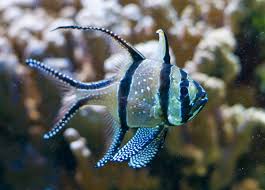Dragons and Their Connection to China’s Cultural and Historical Heritage
The dragon (lóng, 龙) has been a defining symbol of Chinese civilization for millennia, embodying power, wisdom, and divine authority. More than just a mythical creature, the dragon is deeply interwoven with China’s cultural and historical heritage, appearing in royal traditions, architecture, art, literature, religious beliefs, and festivals.
This article explores how dragons have played an essential role in shaping China’s historical and cultural identity, from ancient dynasties to modern interpretations.
I. The Dragon as a Symbol of Imperial Power and Authority
1. The Emperors as “Sons of the Dragon”
From the earliest dynasties, Chinese emperors were regarded as divine rulers chosen by the heavens. The dragon became the ultimate representation of imperial authority, with rulers calling themselves “Sons of the Dragon” (龙的传人, Lóng de chuánrén).
- The Yellow Emperor (Huangdi, 黄帝), a legendary ancestor of the Chinese people, was believed to have transformed into a dragon upon his death.
- The five-clawed golden dragon became an exclusive emblem of the emperor, while nobles and officials were only allowed to use dragons with fewer claws.
The dragon was not just a decorative symbol; it reinforced the emperor’s Mandate of Heaven (天命, Tiānmìng), which justified his divine right to rule. If natural disasters occurred, it was seen as a sign that the emperor had lost this mandate.
2. Dragon Thrones and Royal Artifacts
Imperial palaces were adorned with dragon motifs to emphasize the ruler’s connection to divine power:
- The Dragon Throne (龙椅, Lóng yǐ) in the Forbidden City was reserved exclusively for the emperor.
- The Nine Dragon Screen (九龙壁, Jiǔlóng Bì), found in Beijing, Datong, and other locations, depicted powerful dragons symbolizing strength and unity.
- Imperial robes (龙袍, Lóngpáo) featured golden dragon embroidery, signifying the ruler’s celestial power.
These artifacts serve as enduring reminders of how the dragon was embedded in China’s royal heritage.
II. Dragons in Ancient Chinese Architecture and Cultural Landmarks
1. The Forbidden City and the Nine Sons of the Dragon
The Forbidden City (紫禁城, Zǐjìnchéng) in Beijing is one of the most iconic examples of how dragons influenced Chinese architecture. The palace complex contains over 12,000 dragon carvings on pillars, rooftops, and walls, demonstrating the emperor’s supreme status.
In Chinese mythology, dragons were believed to have nine sons, each with unique characteristics:
- Bixi (赑屃), resembling a turtle, was carved on stone steles to support inscriptions.
- Chiwen (螭吻), a dragon-like creature, was placed on rooftops to guard against fire.
These figures were not just decorative but also reflected the belief that dragons protected important buildings from disasters.
2. The Great Wall and Dragon Imagery
The Great Wall of China (长城, Chángchéng) is sometimes called “The Earth Dragon” (地龙, Dìlóng) due to its winding shape across mountains and valleys.
- Legends claim that a golden dragon guided workers during the wall’s construction.
- In some sections, carvings of dragons were placed to ward off evil spirits and ensure the wall’s strength.
The dragon’s association with protection and endurance made it a fitting symbol for this great historical structure.
III. Dragons in Chinese Literature and Folklore
1. The Dragon in Classical Texts
Dragons appear throughout China’s most important literary works:
- In the “Classic of Mountains and Seas” (山海经, Shānhǎi Jīng), dragons were cosmic beings controlling elements like wind and water.
- The “Records of the Grand Historian” (史记, Shǐjì) mention emperors consulting dragon spirits for guidance.
These texts helped shape the belief that dragons were both wise and benevolent rulers of nature.
2. Dragon Myths and Folktales
Many traditional folktales feature dragons as both benevolent guardians and formidable challengers.
- The Legend of the Four Dragon Kings (四海龙王, Sìhǎi Lóngwáng) tells of dragons who defied the Jade Emperor to bring rain to suffering people, leading to their transformation into China’s four great rivers.
- The story of Nezha and the Dragon King (哪吒闹海, Nézhā Nàohǎi) depicts Nezha, a young deity, battling the arrogant Dragon King of the East Sea.
These tales highlight the duality of dragons—they could be either protectors of humanity or obstacles to overcome.
IV. Dragons in Religious and Spiritual Practices
1. Taoism and Dragons as Cosmic Forces
In Taoism, dragons are seen as manifestations of the Dao (道), the fundamental force of the universe.
- The Azure Dragon (青龙, Qīnglóng) represents the East and is associated with spring, renewal, and harmony.
- Taoist temples often depict dragons coiling around sacred artifacts, symbolizing balance between heaven and earth.
Many Taoist practitioners believe that meditating on dragons can help cultivate inner strength and wisdom.
2. Buddhism and the Dragon as a Guardian of Teachings
Buddhism introduced Nāgas (龙王, Lóngwáng), dragon-like deities believed to protect Buddhist sutras and relics.
- The Dragon King of the Sea is said to have safeguarded the Lotus Sutra, one of the most important Buddhist texts.
- Buddhist temples in China often have dragon statues at entrances, guarding against evil spirits.
These interpretations blend Buddhist and Chinese traditions, reinforcing the dragon’s sacred role.
V. Dragons in Chinese Festivals and Cultural Celebrations
1. The Dragon Boat Festival
The Dragon Boat Festival (端午节, Duānwǔ Jié), celebrated on the fifth day of the fifth lunar month, is one of China’s most famous dragon-related events.
- Dragon boats are raced across rivers to honor Qu Yuan (屈原), a poet who drowned himself in the Miluo River.
- The dragon symbolizes speed, teamwork, and spiritual protection.
This festival demonstrates how dragons remain a living part of Chinese cultural heritage.
2. The Chinese New Year Dragon Dance
During Chinese New Year (春节, Chūnjié), dragon dances (舞龙, Wǔ Lóng) are performed to bring good luck.
- Dancers manipulate long dragon puppets, mimicking their movements to symbolize prosperity.
- The dance is often accompanied by drums and firecrackers to scare away evil spirits.
This tradition connects modern celebrations to ancient beliefs, ensuring the dragon remains a vibrant cultural symbol.
VI. The Dragon’s Legacy in Modern China
Today, dragons continue to be an important part of Chinese identity:
- The Chinese national dragon symbol represents unity and pride.
- Modern films, books, and digital art reinterpret dragons for new generations.
- The Year of the Dragon (龙年, Lóngnián) in the Chinese zodiac is considered an especially lucky time for births and new ventures.
Even as China evolves, the dragon remains a powerful link to its rich past.
Conclusion: The Eternal Dragon of China
From ancient emperors to modern celebrations, the dragon has remained at the heart of China’s cultural and historical heritage. Its presence in palaces, literature, religion, and festivals reflects its timeless significance as a guardian, ruler, and symbol of cosmic balance.
The Chinese dragon is not just a myth—it is a living representation of China’s enduring spirit, wisdom, and strength.


